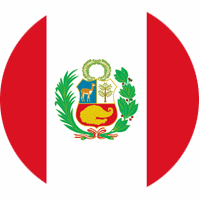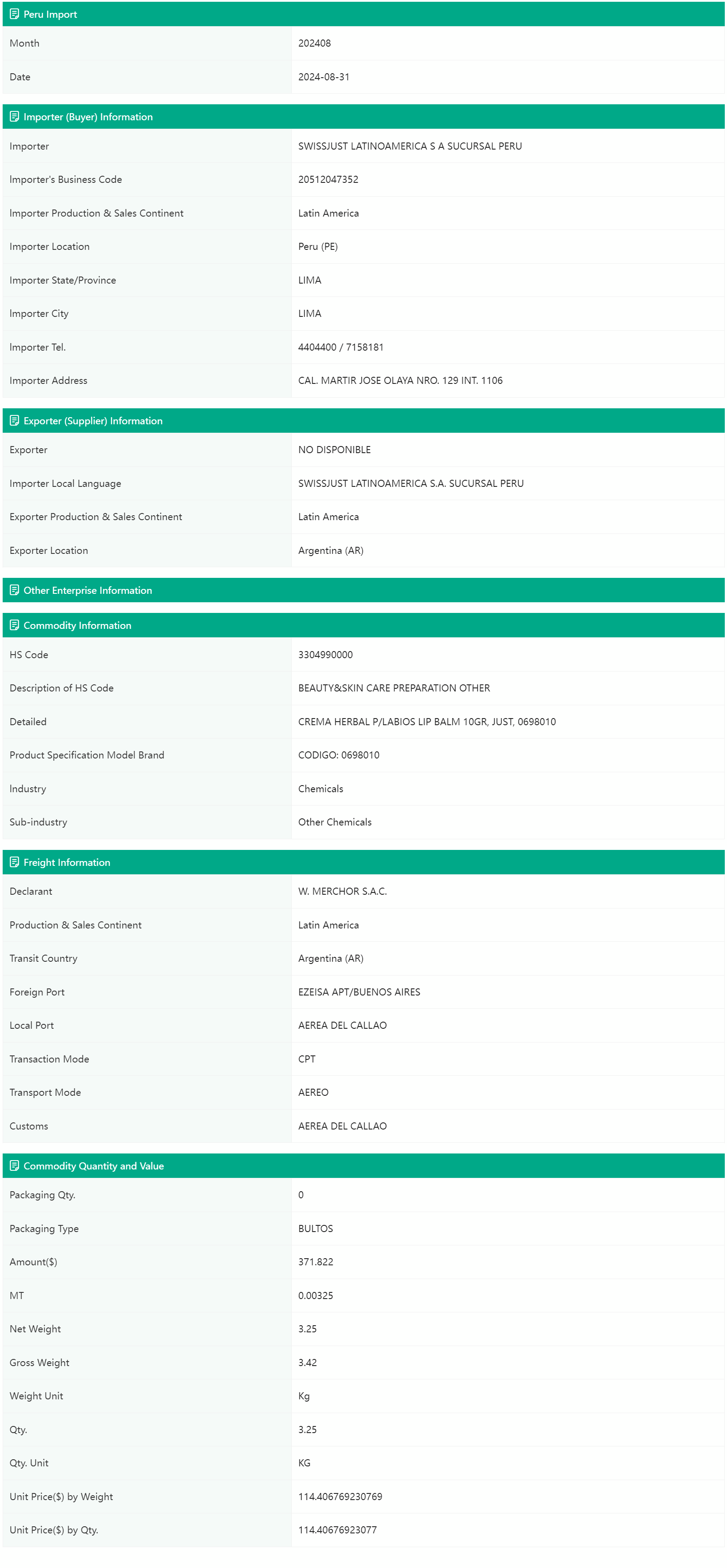Please Sign in to view recently saved searches.
Peru is located in the central part of the western coast of South America. It borders Ecuador and Colombia to the north, Brazil and Bolivia to the east, Chile to the south, and the Pacific Ocean to the west. It has an advantageous geographical location. Peru is an important regional economic power in South America. The market risk is relatively low. The risk index is only higher than that of Chile.
The official languages of Peru are Spanish and Quechua. The latter is an indigenous language. In indigenous settlements, more than 30 other indigenous languages such as Aymara are also used. The more popular foreign language is English.
【Customs】
In social occasions, Peruvians are accustomed to shaking hands when meeting and saying goodbye to guests. When male friends meet, they are generally accustomed to giving hugs and patting each other's shoulders and backs lightly. When Peruvian women meet, they are accustomed to giving kisses (kissing each other on the cheek) and giving blessings. In any case, flowers can be used as gifts. Peruvians have the characteristics of Latin people. They are warm and hospitable, but they are not strong in time concept. When making an appointment with them, you should reserve extra time.
Peruvians are taboos of "13" and "Friday". They think these are unlucky numbers and dates. Encountering them will surely encounter danger. Peruvians are taboos of crows. They think crows are an ominous bird and will bring bad luck and disasters. They are taboos of giving swords and knives as gifts. They think giving these things means cutting off friendship. In terms of diet, they avoid eating strangely shaped foods such as sea cucumbers.
【Mining and Extraction Industry】
In history, Peru was an agricultural and pastoral country, producing coffee, cocoa, fish meal, etc. Later, the mining industry gradually replaced the status of agriculture. Peru has become an important producer and exporter of mineral products such as copper and gold. Peru is very rich in mining resources, and the mining and petrochemical energy industries are relatively developed.
According to data from the Ministry of Energy and Mines of Peru, from January to June 2023, the export value of metals and non-metals mining accounted for about 60% of Peru's total export value.
【Oil and Gas Development Industry】
Peru's oil production cannot yet meet domestic demand. Due to its limited domestic refining capacity, Peru exports crude oil and imports refined oil products. Natural gas is mainly used for power generation, automobile fuel and domestic fuel. The main oil field is the Talara oil field on the northern Pacific coast, and the largest gas field is the Camisea gas field in the southeast.
【Forestry】
Peru is rich in forest resources, but most of them are concentrated in the Amazon region. Due to inconvenient transportation and great difficulty in logging, the forestry industry is not developed and is even far behind neighboring Chile.
According to data from the Ministry of Foreign Trade and Tourism of Peru, in 2022, Peru's wood export value was 124 million U.S. dollars, an increase of 0.4% year-on-year. The main destination of Peru's wood exports is the United States, accounting for 11% of the total export value.
The main wood export enterprises in Peru are: Imk Maderas company; Maderera Bozovich company; Grupo Maderero Amaz company; INFORHUAY company; E & J Matthei Maderas del Perú company; Industria Forestal Huayruro company.
【Fishery】
Peru is a major producer and exporter of fish meal in the world. However, its marine fishery is greatly affected by natural conditions. Therefore, in different years, fishery production statistics will fluctuate greatly.
In 2022, Peru's fishery output value increased by 2.4% year-on-year. The fishery export value was 3.865 billion U.S. dollars, setting a historical record. It is the third largest source of foreign exchange income after mining and agriculture.
【Agriculture】
Peru's traditional agricultural products include coffee, cotton, corn, rice, etc. Non-traditional agricultural products are mainly cash crops, mainly including asparagus, sugar cane, peppers, artichokes, mangoes, avocados, grapes, acidic fruits, etc. The production of food crops is mainly for domestic consumption, and cash crops are mainly for export. Agricultural products are Peru's second largest export industry for earning foreign exchange. Peru has become an important agricultural product exporter in the world.
From January to May 2024, agricultural exports increased by 7.5%, with sales exceeding 3.705 billion U.S. dollars. The export of traditional agricultural products alone increased by 48.5%, totaling 238 million U.S. dollars. The main products are unroasted coffee (198 million U.S. dollars), refined sugar (21 million U.S. dollars) and alpaca wool (4.3 million U.S. dollars). These products account for 93.7% of the total export value of traditional agricultural products. At the same time, non-traditional agricultural exports reached 3.467 billion U.S. dollars, an increase of 5.5% compared to 2023. The most remarkable products are avocados (518 million U.S. dollars), fresh grapes (477 million U.S. dollars), fresh cranberries (353 million U.S. dollars) and fresh mangoes (190 million U.S. dollars). Other important products include cocoa beans (170 million U.S. dollars), animal feed (92 million U.S. dollars) and fresh asparagus (85 million U.S. dollars). These ten products together account for 60.4% of non-traditional export supplies. The total export value of fruits and vegetables is 2.047 billion U.S. dollars, an increase of 2.5% compared to the previous year. The United States, the Netherlands, Spain and Chile are the main export destinations, accounting for 76.3% of the export value. In May alone, agricultural exports reached 670 million U.S. dollars, an increase of 11.3% compared to the same month in 2023. The most exported non-traditional products are avocados (167 million U.S. dollars), cocoa beans (53 million U.S. dollars) and animal food (25 million U.S. dollars).
The top three enterprises in terms of agricultural product sales in Peru (data from 2019) are Louis Dreyfus Perú company, Contilatin del Perú company and Camposol company.
【Foreign Trade】
From January to July 2024, Peru's total export value FOB was 40,822.11 million U.S. dollars, an increase of 8.0% year-on-year. This growth is due to the increase in international prices of zinc, copper and gold. According to export product categories: miners 64.0%, oil and gas 5.5%, fishery 3.9%, agriculture 1.1%, etc.; Peru's total import value FOB was 28,879.45 million U.S. dollars, an increase of 2.91% year-on-year.
【Blooming Trade Data】
Peru customs data is updated periodically with reliable data sources. Detailed transaction data includes detailed information of importers, exporters, cargo information, freight information, and key price and volume information such as commodity trading volume, transaction amount, and transaction unit price, helping you easily grasp the latest import and export market information in Peru.
Are you looking to understand market demand in Peru? Do you want to expand your international presence there? Are you seeking stronger partnerships with clients and reliable suppliers in Peru?

Sample Data


Would you like to stay informed about your competitors' activities in the Peruvian market?
